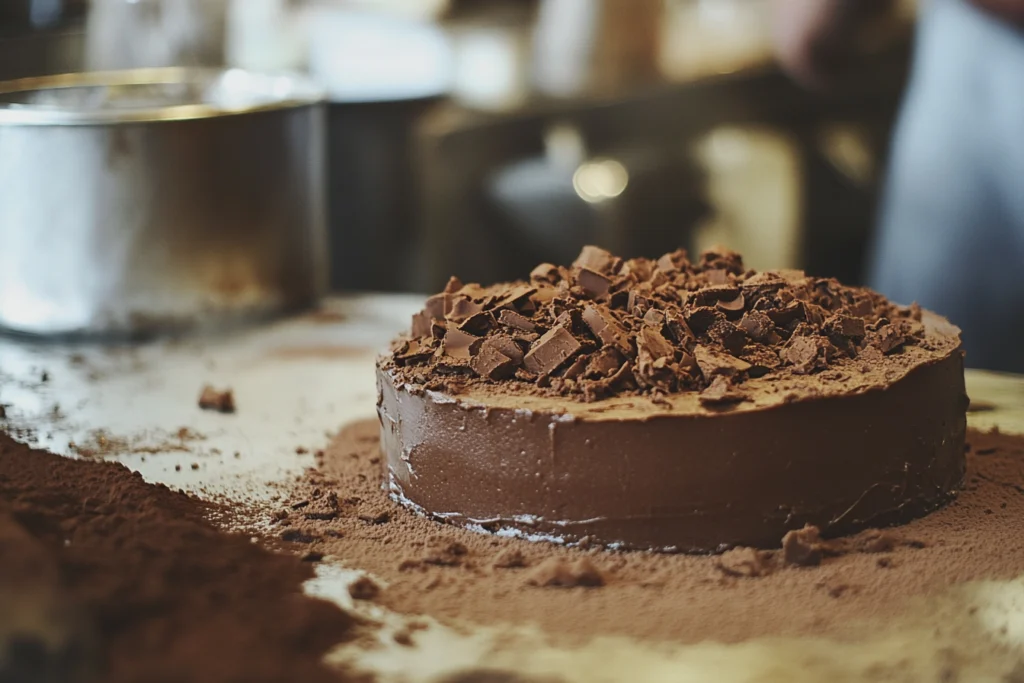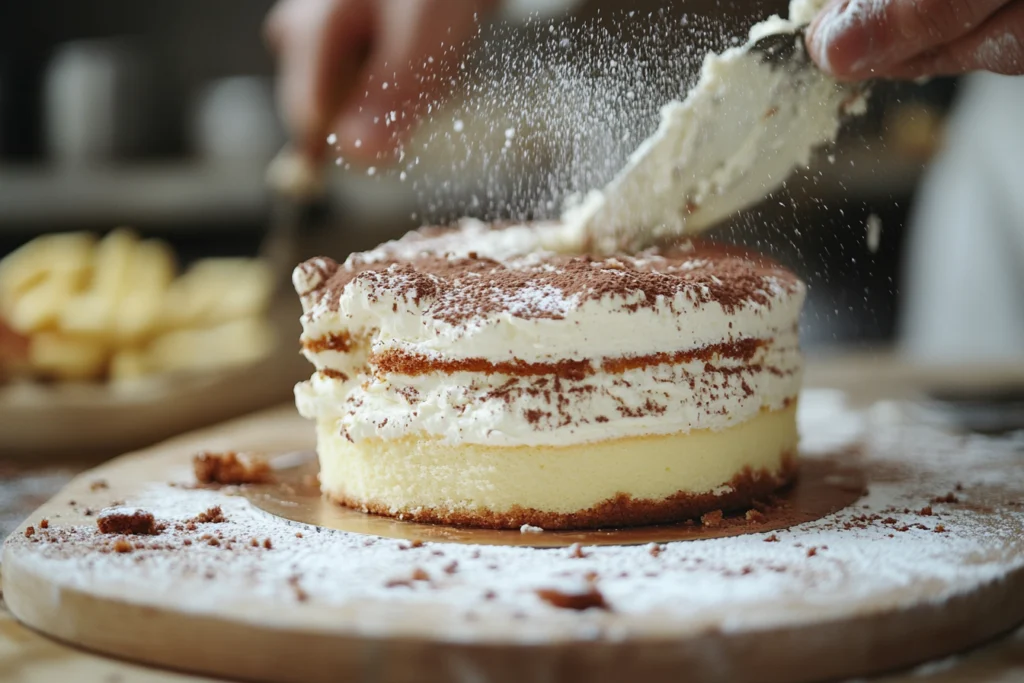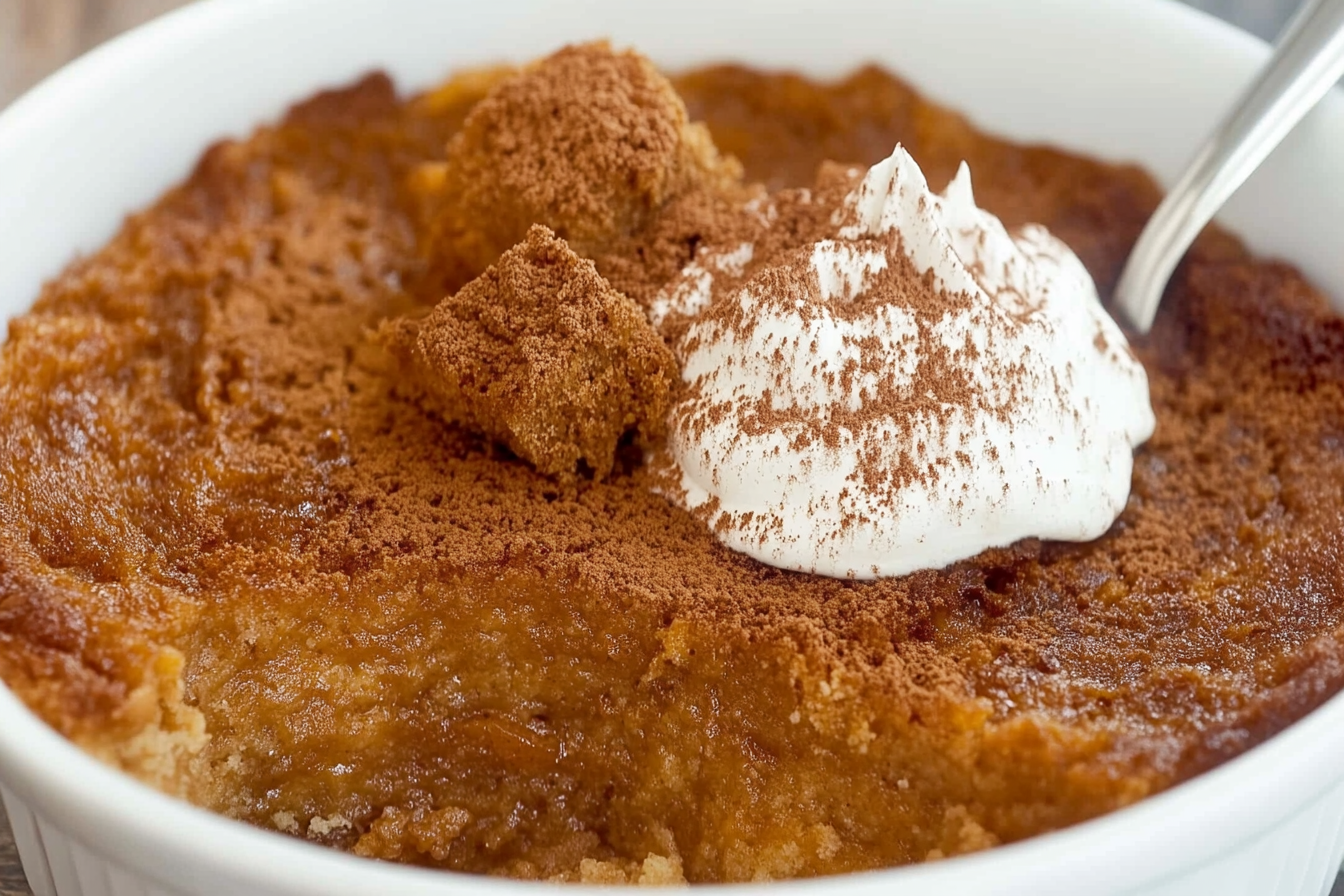Part 1: Introduction to the Dump Method
Overview of Cake-Making Methods
Cake-making has evolved over centuries, with bakers experimenting to find the perfect techniques that combine ease, efficiency, and flavor. The traditional methods, like the creaming or sponge method, involve carefully beating butter and sugar or incorporating air for a delicate crumb. However, with the rise of modern lifestyles, the need for quick, hassle-free techniques birthed innovative approaches like the dump method, which has gained significant popularity among home bakers.
What is the Dump Method of Cake Making?
The dump method is a straightforward, time-saving cake-making technique where all ingredients are added to the bowl simultaneously and mixed together. It eliminates the need for sequential mixing or careful ingredient layering.
Origins
This method is rooted in the efficiency-driven practices of mid-20th-century home bakers. With the advent of pre-mixed baking products and easy-to-use equipment, the dump method became a household favorite.
Characteristics
- All-in-one approach: Ingredients are added at once, cutting down preparation time.
- Less equipment: Minimal bowls or utensils needed.
- Beginner-friendly: Simplified steps ensure consistent results.
Benefits of Using the Dump Method
The dump method offers numerous advantages for modern bakers:
- Time Efficiency: By bypassing complex steps like folding or sifting, it shortens prep time significantly.
- Ease for Beginners: Its intuitive process is perfect for those new to baking, ensuring consistent cakes without advanced techniques.
- Consistency in Results: By combining ingredients simultaneously, the method reduces the chance of uneven mixing, leading to uniformly baked cakes.

Comparing the Dump Method to Other Methods
When compared to traditional techniques, the dump method shines in its simplicity:
- Creaming Method: Involves beating butter and sugar to incorporate air. While it produces a fluffy texture, it demands precision and time.
- Muffin Method: Combines wet and dry ingredients separately before mixing them together, requiring multiple steps and tools.
- One-Bowl Method: Similar to the dump method but often follows a specific order of adding wet, then dry ingredients.
The dump method, in contrast, simplifies all these into one streamlined process.
The Science Behind the Dump Method
Understanding the role of ingredients is key to mastering the dump method:
- Fat: Acts as a tenderizer, providing a moist texture.
- Liquid: Activates leavening agents like baking powder or baking soda, creating the rise.
- Leavening Agents: Generate bubbles during baking for a fluffy crumb.
The simultaneous mixing ensures even distribution of these essential elements, crucial for a cake’s structure and taste.
Common Misconceptions
- Inferiority Concerns: Some believe the dump method produces cakes with less sophistication. However, with proper ingredients and techniques, it can yield exceptional results.
- Texture Worries: Critics claim it lacks the lightness of traditional methods, but careful mixing and ingredient ratios can easily address this.
Popularity in Home Baking
The dump method is celebrated for its accessibility and simplicity. Home bakers often favor it for quick snacks or casual gatherings. It requires no specialized tools or professional skills, making it a perfect choice for those with busy schedules.
Equipment Needed
The beauty of the dump method lies in its minimal equipment requirements:
- Mixing Bowls: A single large bowl for all ingredients.
- Basic Utensils: Whisks, spatulas, or an electric mixer.
- Baking Pans: Versatile options like sheet pans, bundt pans, or loaf pans.
Types of Cakes Best Suited for the Dump Method
Not all cakes benefit from this technique. The dump method works best for:
- Sheet Cakes: Simple, flat cakes perfect for casual occasions.
- Bundt Cakes: The even batter mixing complements the intricate mold designs.
- Quick Snack Cakes: Moist cakes like chocolate or banana bread are easy wins.
Ingredients Compatibility
While the dump method is flexible, ingredient compatibility is crucial:
- Ingredients That Work Well: Pre-sifted flours, fine sugars, and liquids like milk or oil mix effortlessly.
- Ingredients to Avoid: Chunky or hard-to-incorporate items like whole nuts or large fruit pieces can lead to uneven texture.
The Dump Method of Cake Making: A Comprehensive Guide
Part 2: Step-by-Step Guide to the Dump Method
Preparation Before Baking
Proper preparation is the foundation of successful baking. Here’s how to get ready before using the dump method:
- Preheating the Oven: Always preheat your oven to the specified temperature before mixing ingredients. An unprepared oven can affect the cake’s rise and texture.
- Choosing the Right Pan: Opt for pans suited to the recipe, such as non-stick sheet pans, bundt pans, or loaf pans. Grease the pan thoroughly or line it with parchment paper to prevent sticking.
- Preparing Ingredients: Measure all ingredients accurately. Pre-sift dry ingredients like flour or cocoa powder to ensure they blend evenly during mixing.
Essential Ingredients
A successful dump cake relies on a balance of wet and dry ingredients:
- Dry Ingredients:
- Flour: All-purpose flour works well for most recipes, but cake flour yields a softer crumb.
- Sugar: Granulated sugar is the most common choice, but brown sugar adds depth to flavors.
- Leavening Agents: Baking powder and baking soda help achieve the perfect rise.
- Wet Ingredients:
- Liquid: Milk, buttermilk, or water help hydrate the batter.
- Fat: Oil is commonly used due to its ease of incorporation and ability to keep cakes moist.
- Eggs: Provide structure and bind the mixture.
- Common Add-ins: To enhance flavor, include vanilla extract, spices like cinnamon, or zests from citrus fruits.
Steps to Execute the Dump Method
Mastering the dump method is simple with these steps:
- Step 1 – Dump All Ingredients: Add all measured ingredients—wet and dry—into a single large mixing bowl.
- Step 2 – Mixing Properly: Use a hand whisk, spatula, or electric mixer. Start slow to avoid splattering, then mix until smooth. Avoid overmixing, as this can lead to a dense cake.
- Step 3 – Pouring into Pan: Once the batter is smooth, pour it into the prepared pan. Spread evenly to ensure consistent baking.
Mixing Techniques
Mixing is a critical step in the dump method, as improper mixing can lead to uneven textures:
- Hand Mixing: Perfect for small batches. Use a whisk or spatula for better control over the texture.
- Electric Mixing: Speeds up the process for larger quantities. Avoid overusing high speeds to prevent gluten development.
Baking Tips for Success
Attention to detail during baking can make all the difference:
- Oven Temperature Guidelines: Follow recipe instructions for temperature settings. For most dump cakes, 350°F (175°C) is standard.
- Monitoring Baking Time: Set a timer to avoid under- or over-baking. Check for doneness 5–10 minutes before the estimated time.
- Testing for Doneness: Insert a toothpick into the center. If it comes out clean, the cake is ready.

Troubleshooting Common Issues
Baking mishaps can occur even with simple methods. Here’s how to address them:
- Dry Cakes: Caused by insufficient liquid or overbaking. Ensure proper measurements and monitor baking time closely.
- Uneven Texture: Often due to poor mixing. Ensure all ingredients are combined thoroughly before pouring the batter.
- Flat Cakes: Indicates expired leavening agents or overmixing. Use fresh baking powder or soda and mix gently.
Enhancing Flavor and Texture
For cakes with memorable flavors and textures, consider these tips:
- Adding Spices: Warm spices like nutmeg or cardamom can elevate basic cakes.
- Experimenting with Extracts and Liquids: Almond extract, coffee, or citrus juice can create unique flavor profiles.
- Using Fresh Ingredients: Opt for fresh fruits, dairy, and eggs to enhance overall taste.
Adapting Recipes for the Dump Method
The dump method is versatile and can accommodate traditional recipes with some tweaks:
- Converting Recipes: Simplify by combining wet and dry ingredients simultaneously.
- Adjusting Ratios: Increase liquid content slightly to compensate for the lack of gradual incorporation.
Storage and Serving
Proper storage and creative serving ideas can extend the life of your cake:
- Cooling the Cake: Let the cake cool in the pan for 10–15 minutes, then transfer it to a wire rack.
- Storing for Freshness: Wrap tightly in plastic wrap or store in an airtight container at room temperature for 2–3 days. Refrigeration can prolong shelf life but may affect texture.
- Creative Presentation Ideas: Dust with powdered sugar, drizzle with glaze, or serve with whipped cream and fresh berries.
Environmental Impact
Eco-conscious baking is possible with the dump method:
- Reducing Waste: Minimize food waste by measuring ingredients accurately and repurposing leftovers into new recipes.
- Eco-Friendly Ingredient Choices: Choose organic or locally sourced products to reduce the carbon footprint.
The Dump Method of Cake Making: A Comprehensive Guide
Part 3: Advanced Insights and Applications
Variations in the Dump Method
The dump method is adaptable for various types of cakes beyond the traditional formats, allowing bakers to explore creative options:
- Layer Cakes: While layering typically requires more precision, the dump method can be adapted by baking in multiple pans and layering with frosting.
- Cupcakes and Mini Cakes: Perfect for portion control, the batter can be poured into muffin tins or mini cake molds for individual servings.
These variations demonstrate the versatility of the dump method and its potential for both casual and formal occasions.
Regional and Cultural Adaptations
Across the globe, the dump method has been embraced with cultural flair, resulting in unique flavor combinations:
- Dump Cakes Across Different Cultures:
- In North America, variations often include fruits like apples or peaches, topped with cake mix for a crispy, cobbler-like result.
- In Asian countries, flavors such as matcha or black sesame are common, often incorporating ingredients like red bean paste.
- Unique Flavor Combinations:
- Tropical-inspired cakes with coconut milk, pineapple, and mango.
- Spiced variations featuring chai or masala blends.
These adaptations showcase the dump method’s ability to cater to diverse tastes and traditions.
Dump Method for Special Diets
The dump method’s simplicity makes it ideal for creating cakes that cater to dietary restrictions:
- Gluten-Free Dump Cakes: Substitute all-purpose flour with almond flour, oat flour, or a gluten-free blend. Ensure leavening agents and other ingredients are also gluten-free.
- Vegan and Dairy-Free Options: Replace eggs with flaxseed or chia seed “eggs,” and opt for plant-based milk like almond, soy, or oat milk. Coconut oil works well as a butter substitute.
- Sugar-Free Substitutes: Use natural sweeteners like stevia, monk fruit, or maple syrup to reduce sugar content without sacrificing flavor.
Incorporating Seasonal Ingredients
Seasonal produce can elevate your dump cakes, adding freshness and flavor:
- Fresh Fruits: Summer berries, autumn apples, or winter citrus zest can transform a simple recipe into a standout dessert.
- Holiday-Themed Cakes: Incorporate spices like cinnamon, nutmeg, and cloves for festive cakes.
- Seasonal Spices: Pair ginger and molasses for a wintery touch or lavender and lemon for springtime vibes.
By leveraging the availability of seasonal ingredients, your dump cakes can remain fresh and relevant throughout the year.
Commercial Applications
The dump method is not just for home kitchens; it’s increasingly being used in professional settings:
- Using the Dump Method in Bakeries: The time efficiency of the dump method is perfect for high-volume baking. Bakeries can use it for creating consistent, high-quality sheet cakes or snack cakes.
- Scaling Up for Large Batches: Industrial equipment like large mixers and automated pouring systems can make this process seamless for commercial production.
These applications illustrate how the dump method can be scaled to meet the needs of professional bakers.
Recipe Development
Creating custom recipes with the dump method involves balancing creativity with the method’s straightforward nature:
- Creating Custom Dump Cake Recipes: Experiment with ingredient ratios and add unique flavorings, such as exotic spices or unusual extracts.
- Testing for Consistency: Bake multiple small batches to fine-tune ingredient ratios and ensure uniform results across different ovens.
Technology and Innovations
Modern baking tools and technology have made the dump method even more accessible:
- Tools to Simplify the Dump Method:
- Smart kitchen scales that measure and record ingredient weights.
- Pre-programmed mixers designed for specific batter textures.
- Apps and Smart Mixers: Baking apps now feature recipes tailored to the dump method, with step-by-step guidance and timing adjustments.
These innovations have modernized the dump method, making it even easier for home bakers and professionals alike.
Case Studies
The success of the dump method is reflected in stories from both home and professional bakers:
- Home Baker Success Stories: Many home bakers find joy in the simplicity of the method, using it to create desserts for family gatherings or casual celebrations.
- Professional Bakers’ Insights: Professional chefs often appreciate the dump method for its consistency and adaptability, using it for quick yet high-quality results.
FAQs About the Dump Method
- Can I use the dump method for all types of cakes? While it works best for moist, dense cakes, some lighter cakes might require traditional techniques.
- What’s the most common mistake when using the dump method? Overmixing the batter, which can lead to a dense texture.
- How can I make my dump cakes more flavorful? Incorporate extracts, spices, and high-quality ingredients like fresh fruits.
- Can I use gluten-free flours with the dump method? Yes, but ensure the recipe accounts for the structural differences in gluten-free flours.
- Is the dump method suitable for professional use? Absolutely, especially for high-volume or quick-turnaround baking.
- What’s the difference between the dump method and the one-bowl method? The dump method combines all ingredients simultaneously, while the one-bowl method follows a specific order of mixing.
- How do I prevent my dump cake from being too dry? Ensure accurate measurements and avoid overbaking.
- Can I freeze cakes made with the dump method? Yes, wrap tightly in plastic wrap and store in an airtight container.
- Are there specific pans that work better with the dump method? Non-stick pans or parchment-lined pans work best for easy release.
- What’s the best way to add a personal touch to a dump cake? Experiment with custom flavors, creative toppings, or unique presentation styles.
Future of the Dump Method
The dump method’s simplicity and adaptability ensure its relevance in modern baking. Innovations in ingredients, such as plant-based and sustainable options, continue to align it with current trends. From busy home bakers to commercial kitchens, the dump method remains a timeless solution for delicious, easy cakes.

